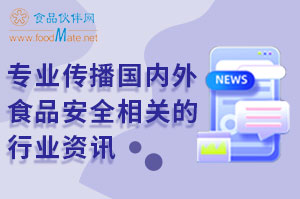食品伙伴网导读:2010年4月21日,欧盟食品安全局食品添加剂小组,发布了三种食用色素的安全评估结果。
原文报道:
As part of its ongoing re-evaluation of all food additives authorised for use in the European Union[1], EFSA’s expert Panel on food additives, the ANS Panel, has adopted scientific opinions on three further food colours.
For the colour Brilliant Black BN (E 151) – which can be used in a range of different foods, including soft drinks, bakery products and desserts – the Panel confirms the existing Acceptable Daily Intake (ADI)[2] of 5 milligrams per kilogram of bodyweight established by the Scientific Committee on Food in 1984. The Panel concludes that only some children who regularly consume large amounts of foods containing the colour might exceed this level of intake.
With regard to the colour Brown HT (E 155) – which can also be used in soft drinks, bakery products and confectionery, as well as sauces, seasonings and pickles – the Panel has halved the previous ADI to 1.5 milligrams per kilogram of bodyweight (mg/kg bw). This is because adverse effects, such as slightly reduced weight gain, were noted in animals following long-term exposure to Brown HT at lower levels than those which were used to determine the ADI in previous evaluations.
Based on the maximum permitted use levels for this colour, together with food consumption data from several countries, the Panel concludes that exposure to Brown HT could be above the new ADI for adults and children who regularly consume large amounts of foods containing the colour. For example, a child weighing 15kg consuming more than 1.125 litres (around 3.4 standard-sized 330ml cans) of soft drinks containing Brown HT at the maximum reported use level every day would exceed the ADI of 1.5 mg/kg bw[3].
Finally, the Panel was not able to reach a conclusion on the safety of the colour Brown FK (E 154) due to significant limitations in the toxicological data available.
EFSA’s ANS Panel published opinions on six food colours – five of which are azodyes (food colours containing nitrogen) – in November 2009, and is due to assess around thirty remaining colours in the next few years. The re-evaluations of two further azodyes, Amaranth (E 123) and Litholrubine BK (E 180), are due to be finalised by June 2010.
- Scientific Opinion on the re-evaluation of Brown FK (E 154) as a food additive
- Scientific Opinion on the re-evaluation of Brown HT (E 155) as a food additive
- Scientific Opinion on the re-evaluation of Brilliant Black BN (E 151) as a food additive
- Topics A-Z: Food Additives
[1] See COMMISSION REGULATION (EU) No 257/2010 of 25 March 2010 setting up a programme for the re-evaluation of approved food additives in accordance with Regulation (EC) No 1333/2008 of the European Parliament and of the Council on food additives. Official Journal of the European Union, L 80, 26.03.2010.
[2] The ADI is the amount of a substance that people can consume every day over the course of a lifetime without any appreciable risk to health. The ADI is generally derived by looking at the highest intake level at which substances do not cause harmful effects in animal experiments and applying a safety factor of 100 to account for differences between humans and animals. This means that even if people exceed the ADI for a certain substance, this will not necessarily cause negative health effects.
[3] For soft drinks containing Brown HT at the maximum permitted use level, this would equate to 450 ml, roughly one and a half 330ml cans.











 地区:
地区:






 鲁公网安备 37060202000128号
鲁公网安备 37060202000128号



